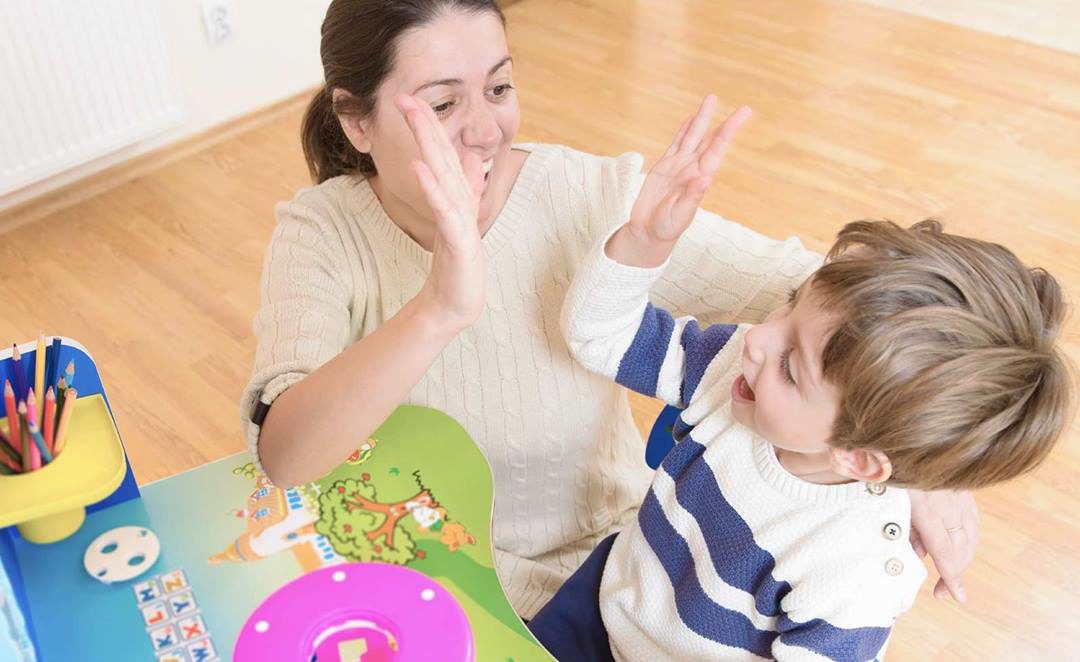Creating Capable Child
Sound Creepy but Its Necessary….

We all know that children tend to take a little (or sometimes a lot) longer when completing simple tasks such as zipping up their coat, opening a jar, or sweeping the floor. We also know that it would be a lot faster to just do it for them rather than having to sit and wait until they get it done. However, that method does not develop self-sufficiency in your child. So, what approach does then?
Be patient
When your child is trying to zip up their coat, do you wait a couple seconds and then do it for them? Or do you wait until they figure it out or actually need your help? Instead of jumping in right away, try using encouraging words like “Almost!” or “So close!” You will be able to tell when they are ready to give up. If they reach that point, try asking if they would like your help, and if so, you could put your fingers over theirs and zip it up together.
Use examples, not just words
When your child is sweeping the floor, but doing more harm than good, simply take the broom for a moment, show them how, and say, “Here, if you do it this way, you’ll get the floor a lot cleaner.”
Don’t plan every minute of their day

There are a ton of benefits that come from boredom. When you plan activity after activity for your child or give them access to a phone or similar device, they don’t ever have a chance to get bored. If they do experience boredom, they will learn to fill the time up with something by themselves. Boredom is a restless state, and the brain, with practice, will find things to do to get out of it, such as daydreaming, imagining, and problem solving. If your child is used to being occupied, they will grow agitated when they’re not doing something and will look to you to fill their time. So make it easier on yourself, and let your child be bored every once in a while.
Playground Safety!

Time to put the winter coats, sleds and ice skates away for next winter. The weather is starting to warm up, which means we get to spend MORE time outside with our children. Zoos, parks and playgrounds — here we come!
I was born in the ’80s; we had big hair, loud clothes and playground equipment that has since been removed for safety reasons. Did a fond memory just pop into your head? Anyone remember a 12–15 foot tall metal slide with a bump in the center? Not only did the bump send you flying, but the sun warmed up the surface of the slide so it was sometimes too hot to touch! What about a merry-go-round?
These were popular back in my day; you could get going so fast the motion could throw you right off ! And what about being the kid who spun the merry-go-round? How many of you ended up being dragged when you lost your footing? Yes, there is a reason playgrounds look differently today than they did over 20 years ago.
Safety,

The Centers for Disease Control and Prevention finds that emergency departments still see more than 20,000 children, ages 14 and younger, for play-ground-related traumatic brain injuries each year. The National Safety Council (NSC) states that nearly 80 percent of playground injuries are caused by falls.
The top equipment associated with injuries includes: climbers, swings, slides and overhead ladders. Some unnecessary risks can mitigate using the SAFE guidelines later discussed in this article. But, there is a healthy degree of risk necessary for learning and development.
Worth the Risk?
The opportunity for “risky play” is not without benefit. In the early years, children should have numerous and varied opportunities to assess risk and manage situations. Very young children assess and take risks daily, which ultimately leads to new learning.
Think about a child learning to walk. At first they need substantial support, from us and the furniture around them. But gradually, they make small changes to their posture and the speed at which they move. Sure, they fall down a lot before they master it fully, but with practice comes skill.
The same goes for risky play on playground equipment, or just playing outside in general. Children are not only learning how to move their bodies to be successful, which develops skills and coordination, they are also learning about success and failure.
Risky play also ignites motivation. We want our children to be motivated — to strive for success, make adjustments and try repeatedly. Giving it their all, and finding success or failure, will also teach them their limits. Research shows us children who do not engage in risky play may have poor balance, appear to be clumsy and even feel uncomfortable in their own bodies.
The Adults Role.

Adults do play a part. Our children need us to be there to cheer them on, give them a thumbs up and offer support as needed. We need to take them to parks and playgrounds that offer play movements which are often associated with risk. These include swinging, hanging, sliding and rolling. We also need to educate ourselves on which equipment is developmentally appropriate for your child’s age and personal development.
The National Program for Playground Safety (NPPS) provides us with the acronym S.A.F.E. as a way to remember the four contributing factors to properly maintain a safe play-ground atmosphere.
S – Provide proper SUPERVISION of children on playgrounds.
A – Design AGE- APPROPRIATE playgrounds.
F – Provide proper FALL SURFACING under and around playgrounds .
E – Properly maintain playground EQUIPMENT.

